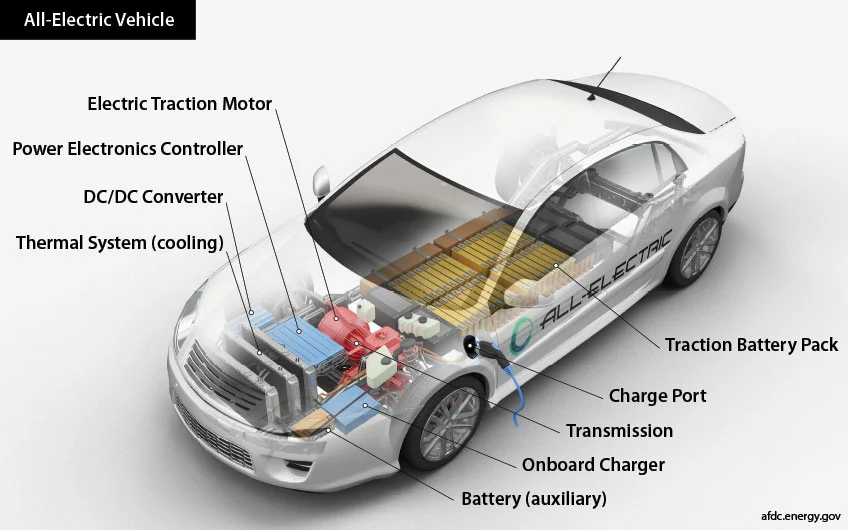All-Electric Vehicle Basics
An all-electric vehicle (EV) uses a battery to store the electrical energy that powers the motor.

EV batteries are charged by plugging the vehicle into an electric power source. They are also equipped with regenerative braking systems to capture the kinetic energy normally lost during braking and store it in the battery.
EVs are far more efficient than conventional vehicles and produce no tailpipe emissions. They also typically require less maintenance because the battery, motor, and associated electronics require little to no regular upkeep. Plus, electric vehicles experience less brake wear thanks to regenerative braking and have fewer moving parts and fluids to change relative to conventional vehicles.
Additional Resources
Learn about NREL's transportation and mobility research.
For more information about all-electric vehicles, visit the U.S. Department of Energy's Alternative Fuels Data Center.
Use the Alternative Fueling Station Locator to find publicly accessible EV charging stations across the nation.
Share
Last Updated March 25, 2025
